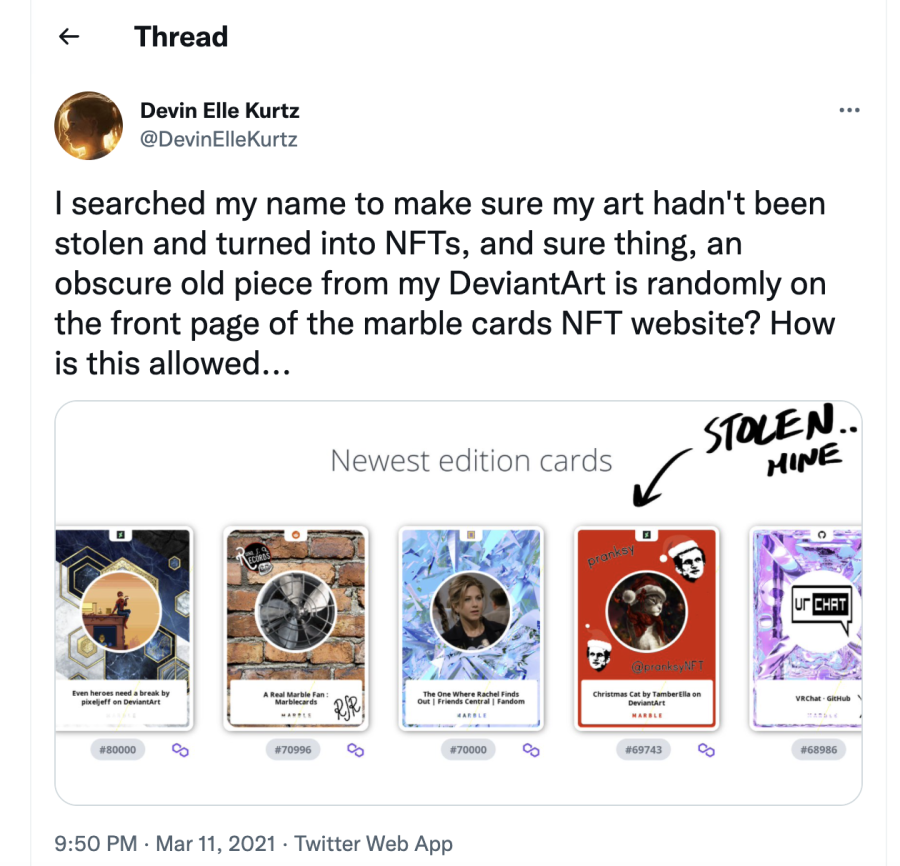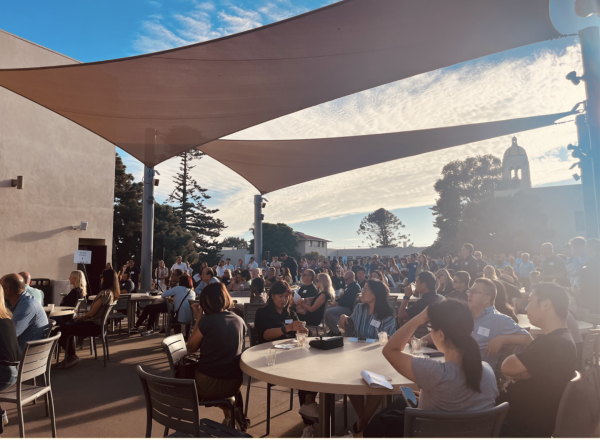Two Sides of the Virtual Token
A look into how NFTs work
Artist Devin Elle Kurtz tweets about her distaste towards NFTs and how it have impacted her personally.
The infamous internet meme “Disaster Girl” has become a NFT which has been sold for 500,000 dollars. The Nyan Cat video that went viral on Youtube in 2011 became an NFT and was sold for 580,000 dollars. What makes these NFTs, Non-Fungible Tokens, so valuable? And more importantly, what are they?
A NFT is a unique digital identifier that can’t be copied or substituted as a cryptocurrency. Even though the whole internet can still have access to the various photos and videos that have become NFTs, the original version is what is being sold. In this perspective, an NFT is more like having a certificate because the video of Nyan Cat is still online and viewable on Youtube. Seeing an opportunity, many different artists have begun releasing their own NFTs as it can come in many different forms, like videos, audio, and pictures.
NFTs can be sold for upwards of 10 millions dollars, using a type of cryptocurrency called Ethereum (ETH) which is very similar to Bitcoin. This currency is only usable in a system called blockchain. A blockchain is a system used to store and record data that is virtually impossible to hack. It is often used as a public ledger of transactions that can be distributed to different computers using that blockchain. NFTs only use this type of cryptocurrency that can be translated to real money. One ETH can be traded for over 3,000 USD.
The Ethereum blockchain is not accessible to anyone. “OpenSea is the largest auctioning site for NFTs,” said Mr. Joshua Bloom, one of the Computer Science teachers at Bishop’s. Operating the blockchain requires professional programers and coders to approve and insert the Ethereum transactions. When buying Ethereum, there is usually an extra cost called a “Gas Fee.” Similar to a shipping charge, buyers are charged a certain amount of money for the programmers to encode the transaction into the Ethereum blockchain.
Seeing this selling potential, many different artists are seizing this opportunity to create and release their own. People like Grimes, Snoop Dog, and John Cena have put NFTs in the market. Even though big celebrities have promoted their NFTs, this cryptocurrency can benefit smaller artists. With the rising popularity of NFTs, smaller artists have a chance at making it big with their work unlike before. CGI artist Beeple has made up to 65 million dollars on a collection of his artwork, and his work is safely stored in the blockchain where each transaction is safely stored.
However, the Ethereum blockchain has some downsides.
Ethereum, the currency of NFTs, is very energy intensive. One Ethereum transaction uses 238.22 kilowatts an hour as stated by Statista. To put this into perspective, 100,000 VISA transactions use 148.63 kilowatts an hour, almost half of Ethereum’s energy usage. This much energy consumption also has a large carbon footprint as well. According to the website, Down to Earth, a single transaction created 102.38 kilograms of carbon in December of 2021. 17,063 hours of Youtube produced the same amount of carbon as one Ethereum transaction, one NFT sold. Just think about it, it is clear that NFTs are not helping the environment get any better.
And even though NFTs may have helped some artists like Beeple, other artists like Devin Elle Kurtz, did not receive the same benefits. In March of 2021, Kurtz released a tweet about how someone had stolen her older and more obscure art and sold it as an NFT. Seeing her art being sold as someone else’s, con-artists have found a loophole in the “secure” Ethereum blockchain. Scammers have discovered that they can pose as the artist and make lots of money, pretending that someone else’s art is theirs.
With two sides to these virtual tokens, it is up to the people on how they want to use Non-Fungible Tokens.

Joyce is a freshman and joined the Tower as a staff writer this year. She came to the Bishop’s School in six grade, and has watched everyone grow taller...







